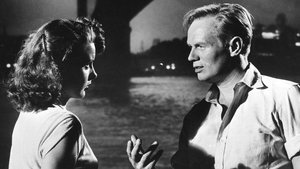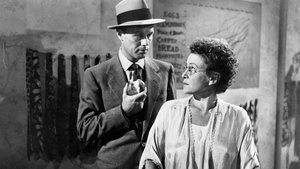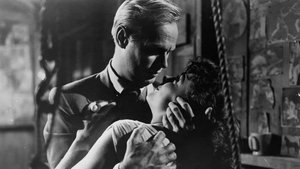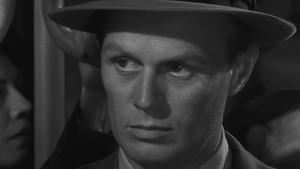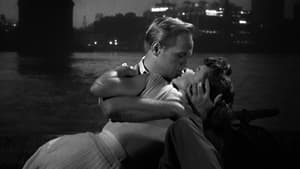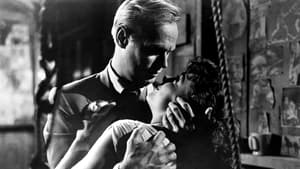Contact: [email protected]
Video Sources 0 Views
- Watch trailer
- Pickup on South Street


Synopsis
Table of Contents
ToggleReview: Pickup on South Street 1953 – Exploring the Impact of Early Colorization

Introduction
In the vast tapestry of cinematic history, few films have left as lasting an impact as Pickup on South Street. Directed by Samuel Fuller and released in 1953, this gritty noir masterpiece has enthralled audiences for decades with its gripping narrative and unforgettable characters. However, our focus today extends beyond the traditional scope of film criticism. We delve into the realm of early colorization and its impact on the viewing experience of Pickup on South Street 1953. In this article, we embark on a journey through time, exploring the significance of colorization in the context of film history and examining how it alters our perception of a beloved classic.
Check The Full Colorized Movies List
Check Our Colorized Movies Trailer Channel
Understanding Pickup on South Street 1953: Director, Cast, and Genre
Samuel Fuller’s vision for Pickup on South Street 1953 was nothing short of revolutionary. Known for his bold storytelling and uncompromising vision, Fuller sought to push the boundaries of conventional filmmaking with this noir gem. The film boasts a stellar cast, including Richard Widmark as the enigmatic pickpocket Skip McCoy, Jean Peters as the alluring Candy, and Thelma Ritter as the streetwise informant Moe. Together, they bring Fuller’s vision to life with performances that resonate with raw emotion and authenticity. Pickup on South Street 1953 defies easy categorization, blending elements of crime drama, political thriller, and romance to create a genre-defying masterpiece that continues to captivate audiences to this day.
Exploring the World of Pickup on South Street 1953: Plot and Characters
At its core, Pickup on South Street 1953 is a tale of deception, loyalty, and redemption set against the backdrop of Cold War paranoia. The film follows Skip McCoy, a seasoned pickpocket who becomes unwittingly embroiled in a web of espionage when he lifts the wallet of a beautiful young woman named Candy. As Skip and Candy’s paths collide, they find themselves drawn into a dangerous game of cat and mouse with far-reaching consequences. Along the way, they encounter a colorful cast of characters, including the ruthless communist agent Zara, played with chilling intensity by Richard Kiley, and the grizzled police detective Tiger, portrayed by the venerable Murvyn Vye. As alliances shift and loyalties are tested, Skip must navigate a treacherous world where nothing is as it seems, culminating in a thrilling climax that keeps audiences on the edge of their seats until the very end.
The Art of Film Colorization
Film colorization is a process by which black and white films are digitally enhanced with color, allowing audiences to experience classic films in a new light. While controversial, it has become an increasingly common practice in recent years, with many filmmakers and studios embracing it as a way to breathe new life into timeless classics.
Early Colored Films: A Brief History
The history of early colored films is as rich and varied as the colors themselves. From the hand-tinted frames of silent cinema to the dazzling Technicolor extravaganzas of the Golden Age, filmmakers have long sought to capture the vibrancy of the world in vivid detail. While early colored techniques were often crude and labor-intensive, they laid the groundwork for the stunning visual effects and digital wizardry that define modern cinema.
Pickup on South Street 1953 and Its Early Colored Version
The decision to release Pickup on South Street 1953 in a colorized format was met with both excitement and trepidation. On one hand, it offered audiences a chance to see Fuller’s masterpiece in a new light, with vibrant colors breathing new life into familiar scenes. On the other hand, purists worried that the colorization process would detract from the film’s stark visual aesthetic, diluting its noir atmosphere and gritty realism. Ultimately, whether one prefers the original black and white version or the colorized edition is a matter of personal preference. However, there’s no denying that the colorized version offers a fresh perspective on Fuller’s masterwork, allowing audiences to see familiar scenes in a new light and perhaps discover new depths to the film’s visual and emotional impact.
The Debate Over Film Colorization
The controversy surrounding film colorization is as old as the process itself. While proponents argue that it breathes new life into classic films and makes them more accessible to modern audiences, purists contend that it detracts from the artistic integrity of the original work. They argue that colorization alters the filmmaker’s intended vision, robbing the film of its intended atmosphere and emotional impact. The debate rages on, with no clear consensus in sight.
Examining Pickup on South Street 1953 as an Early Colored Film
Viewing Pickup on South Street 1953 in its early colored iteration offers a unique viewing experience. While the colorization adds a layer of visual richness to the film, it also runs the risk of diluting its noir aesthetic. Some may argue that the vibrant colors detract from the film’s gritty realism and stark atmosphere, while others may appreciate the opportunity to see familiar scenes in a new light. Ultimately, whether one prefers the original black and white version or the colorized edition is a matter of personal preference. However, there’s no denying that the colorized version offers a fresh perspective on Fuller’s masterwork, allowing audiences to see familiar scenes in a new light and perhaps discover new depths to the film’s visual and emotional impact.
Influence and Legacy: Pickup on South Street 1953’s Impact on Cinema
Pickup on South Street 1953 has left an indelible mark on the cinematic landscape, inspiring countless filmmakers and spawning a wave of imitators. Its influence can be seen in everything from gritty crime dramas to sprawling epics, cementing its status as a true classic of the silver screen. The film’s innovative storytelling and bold visual style have paved the way for generations of filmmakers, leaving an enduring legacy that continues to resonate to this day.
Director’s Cinematic Legacy: Beyond Pickup on South Street 1953
Samuel Fuller’s impact on cinema extends far beyond Pickup on South Street 1953. Throughout his storied career, he pushed the boundaries of conventional filmmaking, tackling controversial subjects and challenging audiences to confront uncomfortable truths. His bold storytelling and uncompromising vision have inspired generations of filmmakers, leaving an indelible mark on the world of cinema that continues to resonate to this day.
Themes Explored in Pickup on South Street 1953
At its core, Pickup on South Street 1953 explores themes of darkness, violence, and morality. Through its complex characters and gripping narrative, the film forces audiences to confront the darker aspects of human nature, leaving a lasting impression long after the credits roll. From Skip McCoy’s morally ambiguous actions to Candy’s struggle for survival in a hostile world, Pickup on South Street 1953 delves deep into the complexities of the human condition, offering a thought-provoking exploration of timeless themes that resonate with audiences to this day.
Reception and Controversy Surrounding Pickup on South Street 1953
The release of the colorized version of Pickup on South Street 1953 sparked a flurry of debate among critics and audiences alike. While some praised the film’s newfound visual splendor, others lamented the loss of its stark black and white aesthetic. Despite the controversy, the film remains a beloved classic, standing the test of time as a testament to Fuller’s directorial prowess and the enduring power of cinema.
Where to Watch Pickup on South Street 1953 Online
For those eager to experience Pickup on South Street 1953 for themselves, the film is readily available on popular streaming platforms such as Netflix, Amazon Prime, and Hulu. Whether viewed in its original black and white format or its early colored iteration, Pickup on South Street 1953 continues to captivate audiences with its gripping narrative and unforgettable characters, cementing its status as a true classic of the silver screen.
FAQs About Pickup on South Street 1953
1. Is Pickup on South Street 1953 based on a true story?
Pickup on South Street 1953 is a work of fiction inspired by real-life events and experiences. While the film’s storyline is not directly based on a specific true story, it draws inspiration from the social and political landscape of its time, particularly the Cold War era, to craft its narrative of espionage, betrayal, and redemption.
2. Who directed Pickup on South Street 1953?
Pickup on South Street 1953 was directed by Samuel Fuller, a pioneering filmmaker known for his bold storytelling and uncompromising vision. Fuller’s unique directorial style, characterized by gritty realism and moral ambiguity, shines through in Pickup on South Street 1953, making it a standout example of his cinematic oeuvre.
3. What is the significance of the title Pickup on South Street?
The title Pickup on South Street refers to the film’s setting, the seedy underbelly of New York City’s Lower East Side. South Street serves as a microcosm of urban life, teeming with colorful characters and hidden dangers. By centering the narrative around this iconic locale, director Samuel Fuller is able to immerse audiences in the world of his film and explore themes of crime, corruption, and redemption with unflinching honesty.
4. What is the central conflict of Pickup on South Street 1953?
At its core, Pickup on South Street 1953 revolves around the central conflict between the protagonist, Skip McCoy, and the various forces vying for control of the stolen microfilm he unwittingly acquires. As Skip becomes embroiled in a dangerous game of espionage, he must navigate a treacherous world of double-crosses and deception while grappling with his own moral compass.
5. What sets Pickup on South Street 1953 apart from other noir films of its time?
Pickup on South Street 1953 stands out from other noir films of its time due to its gritty realism, morally ambiguous characters, and socially relevant themes. Director Samuel Fuller’s uncompromising vision and bold storytelling elevate the film beyond mere genre conventions, offering audiences a thought-provoking exploration of the human condition in all its complexity.
6. What is the significance of the film’s early colored version?
The early colored version of Pickup on South Street 1953 offers audiences a fresh perspective on a classic film, allowing them to see familiar scenes in a new light. While some purists may prefer the original black and white version, the colorized edition provides an opportunity to experience Fuller’s masterwork in a new way, with vibrant colors enhancing the film’s visual and emotional impact.
7. How does the colorization process affect the film’s visual aesthetic?
The colorization process adds a layer of visual richness to Pickup on South Street 1953, enhancing the film’s overall visual appeal. However, some purists argue that it detracts from the film’s stark noir aesthetic, diluting its gritty realism and atmospheric tension. Ultimately, whether one prefers the original black and white version or the colorized edition is a matter of personal preference.
8. What is the legacy of Pickup on South Street 1953?
Pickup on South Street 1953 has left an indelible mark on the cinematic landscape, inspiring generations of filmmakers and influencing countless works of art across various mediums. Its enduring legacy speaks to the timeless nature of its themes and the power of storytelling to resonate with audiences across generations.
9. Are there any sequels or remakes of Pickup on South Street 1953?
While there are no direct sequels or remakes of Pickup on South Street 1953, the film has inspired numerous works of art across various mediums, including literature, television, and music. Its influence can be seen in everything from gritty crime dramas to political thrillers, cementing its status as a true classic of the silver screen.
10. Where can I watch Pickup on South Street 1953 online?
For those eager to experience Pickup on South Street 1953 for themselves, the film is readily available on popular streaming platforms such as Netflix, Amazon Prime, and Hulu. Whether viewed in its original black and white format or its early colored iteration, Pickup on South Street 1953 continues to captivate audiences with its gripping narrative and unforgettable characters.
Conclusion
In conclusion, Pickup on South Street 1953 remains a timeless classic, regardless of its colorized iteration. While the debate over film colorization rages on, one thing remains clear: Samuel Fuller’s masterwork continues to captivate audiences with its gripping narrative and unforgettable characters. Whether viewed in its original black and white format or its early colored version, Pickup on South Street 1953 stands as a testament to the enduring power of cinema and the transformative nature of storytelling. As audiences continue to revisit this cinematic gem for generations to come, its legacy will endure, inspiring countless filmmakers and captivating audiences with its timeless tale of crime, passion, and redemption.
